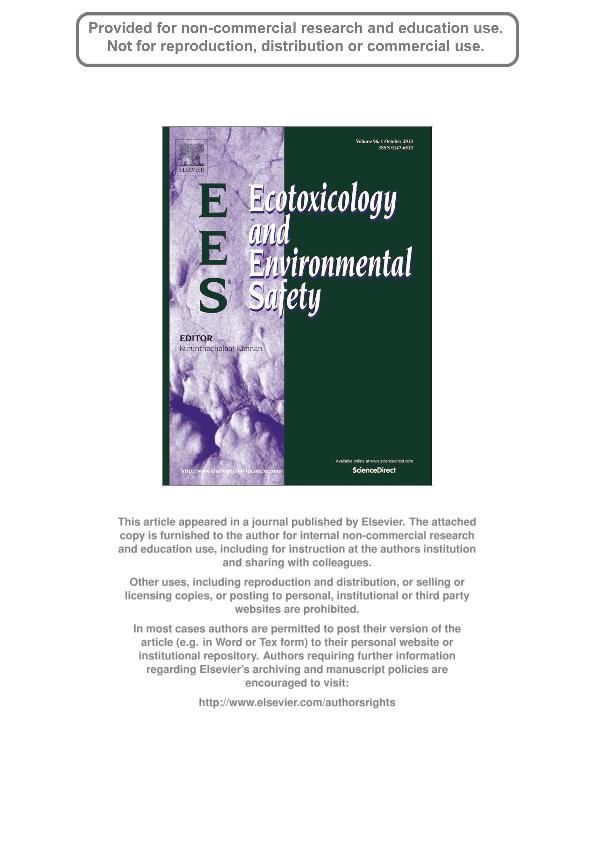Artículo
Developmental endpoints of chronic exposure to suspected endocrine-disrupting chemicals on benthic and hyporheic freshwater copepods
Di Marzio, Walter Dario ; Castaldo, D.; Di Lorenzo, T.; Di Cioccio, A.; Sáenz, María Elena
; Castaldo, D.; Di Lorenzo, T.; Di Cioccio, A.; Sáenz, María Elena ; Galassi, D.
; Galassi, D.
 ; Castaldo, D.; Di Lorenzo, T.; Di Cioccio, A.; Sáenz, María Elena
; Castaldo, D.; Di Lorenzo, T.; Di Cioccio, A.; Sáenz, María Elena ; Galassi, D.
; Galassi, D.
Fecha de publicación:
06/2013
Editorial:
Elsevier
Revista:
Ecotoxicology and Environmental Safety
ISSN:
0147-6513
Idioma:
Inglés
Tipo de recurso:
Artículo publicado
Clasificación temática:
Resumen
The aims of this study were: (i) to assess if carbamate pesticides and ammonium, widely detected in European freshwater bodies, can be considered ecologically relevant endocrine-disrupting chemicals (EDCs) for benthic and interstitial freshwater copepods; and (ii) to evaluate the potential of copepods as sentinels for monitoring ecosystem health. In order to achieve these objectives, four species belonging to the harpacticoid copepod genus Bryocamptus, namely B. (E.) echinatus, B. (R.) zschokkei, B. (R.) pygmaeus and B. (B.) minutus, were subjected to chronic exposures to Aldicarb and ammonium. A significant deviation from the developmental time of unexposed control cultures was observed for all the species in test cultures. Aldicarb caused an increase in generation time over 80% in both B. minutus and B. zschokkei, but less than 35% in B. pygmaeus and B. echinatus. Ammonium increased generation time over 33% in B. minutus, and 14, 12 and 3.5% for B. pygmaeus, B. zschokkei and B. echinatus, respectively. On the basis of these results it can be concluded that chronic exposure to carbamate pesticides and ammonium alters the post-naupliar development of the test-species and propose their potential role as EDCs, leaving open the basis to search what are the mechanism underlying. A prolonged developmental time would probably produce a detrimental effect on population attributes, such as age structure and population size. These deviations from a pristine population condition may be considered suitable biological indicators of ecosystem stress, particularly useful to compare polluted to unpolluted reference sites. Due to their dominance in both benthic and interstitial habitats, and their sensitivity as test organisms, freshwater benthic and hyporheic copepods can fully be used as sentinel species for assessing health condition of aquatic ecosystems as required by world-wide water legislation.
Archivos asociados
Licencia
Identificadores
Colecciones
Articulos(SEDE CENTRAL)
Articulos de SEDE CENTRAL
Articulos de SEDE CENTRAL
Citación
Di Marzio, Walter Dario; Castaldo, D.; Di Lorenzo, T.; Di Cioccio, A.; Sáenz, María Elena; et al.; Developmental endpoints of chronic exposure to suspected endocrine-disrupting chemicals on benthic and hyporheic freshwater copepods; Elsevier; Ecotoxicology and Environmental Safety; 96; 6-2013; 86-92
Compartir
Altmétricas



